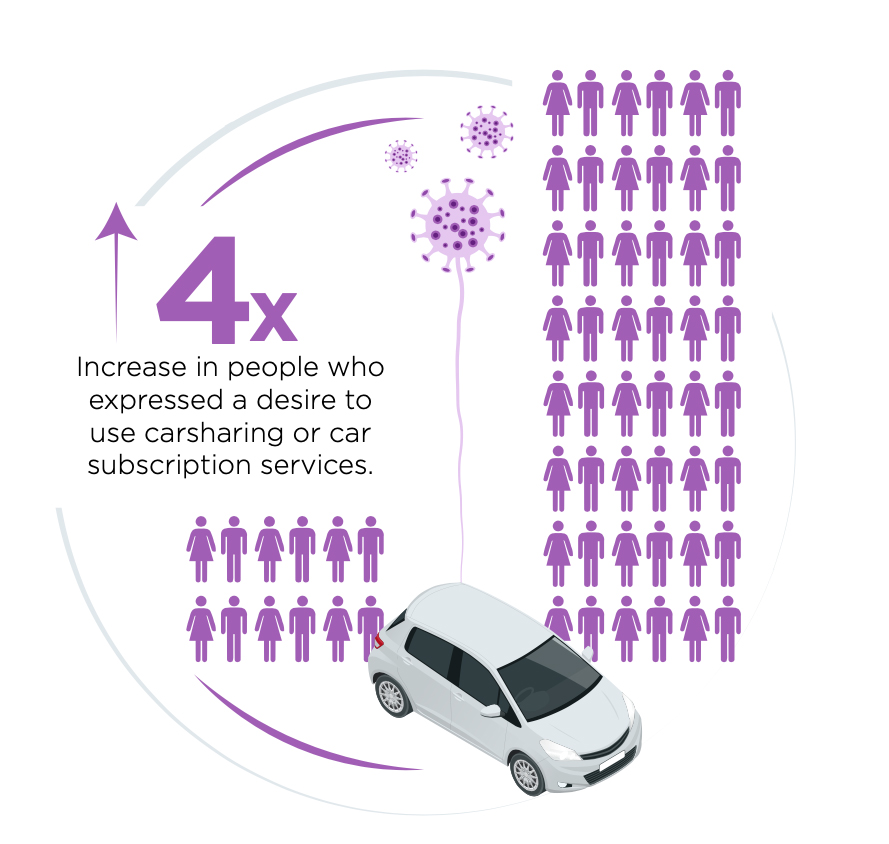For decades cars have been the most widely used form of motorised passenger transportation around the world, says Mark Thomas of Ridecell. As much as we love the freedom of the open road, however, our cars are rarely used.
Even well before the pandemic hit, cars were parked 95% of the time. The average car owner drives their car just nine hours a week, despite the significant cost investment and the staggering waste of unuse.
Consumer preferences for transportation are beginning to shift at a time when vehicle manufacturers and dealers are also reimagining the way they engage customers. Innovations in mobility are altering customer behaviour and lifestyle, and the pandemic has forced companies to find new ways to meet customer needs while building brand loyalty.
Why carsharing makes sense now
Just as COVID accelerated the adoption of grocery delivery services, it has had a similar jumpstart within the carsharing market. We hear from fleet owners that people are keeping shared cars longer and driving them more than ever before. While a market correction is expected post-COVID, it’s hard to imagine it will ever go back to the way it was previously.
Paying only for what you use is becoming the new norm across a variety of industries. In the case of vehicle ownership, it can be quite attractive using a pay for use model as opposed to the commitment of buying outright or long-term lease agreements.
As we see a decline in ridesharing, carsharing is increasing in popularity for the ability to share the asset without having to share the space. A recent survey revealed that while 22% of respondents used either public transport or ridesharing before the pandemic, now those numbers hover at just 9%. Meanwhile, interest in carsharing and car subscription services quadrupled from 5% to 20%.
Technology within the fleet management industry makes it easier for fleet owners to ensure a car has been thoroughly cleaned, sanitised, and maintained for each new user, increasing the preference for carsharing options.
The future is integration
An increase in shared mobility helps far more than just fleet owners. Rather than the 4% utilisation rate of the average privately owned vehicle, carsharing vehicles are achieving into the 30% of utilisation. In some markets, cars are being rented up to 10x per day.
All of this activity has a nice side benefit. It helps alleviate a critical infrastructure issue for most cities and towns parking. Each shared vehicle is estimated to remove up to 11 vehicles from the road once people become accustomed to using the shared vehicles.

Carsharing also benefits climate initiatives and helps increase the adoption of electric vehicles (EVs). It’s more cost-effective for fleet owners to utilise EVs, and when the consumer is not the one to have to worry about keeping the car charged, they are much more likely to use them.
In fact, GIG (a AAA carsharing company) operates the shared electrical fleet in the US, providing many customers their first exposure to EVs. Carsharing also helps alleviate traffic congestion, something that we’ve seen diminish during COVID and which most people will be reticent to have to endure again.
This means that cities and local governments are a great place to start with carsharing integration as it helps alleviate strains in parking, traffic, and pollution. As infrastructure is built to support sharing models, their ease and convenience will increase. We’re seeing more of this happen across large cities, and COVID proved to be an effective catalyst as it allowed for the time to rethink shared spaces, traffic flows, roadways, and parking lots.
What challenges exist?
While the future looks bright for a robust, integrated shared mobility solution, obstacles need to be overcome. Government regulation is a big hurdle, especially as it differs from state to state and city to city.

Expansion is also a challenge, and integration takes time. All parties need to share data and become invested in devising the best, standardised solutions that can more easily be integrated across new locations.
Make no mistake, shared mobility is here to stay, and COVID, in many ways, has cleared out the ‘noise’ and allowed the industry to focus on what makes the most sense for the largest number of people. As carsharing continues to grow, we’ll see OEMs embracing entirely new business models focused on subscription services and transportation on demand.
We may always love our cars, but we may find sharing them is a more cost-effective, environmentally friendly, and ultimately, just as enjoyable way to use them.
The author is Mark Thomas, VP of Alliances at Ridecell.
Comment on this article below or via Twitter: @IoTNow_OR @jcIoTnow










